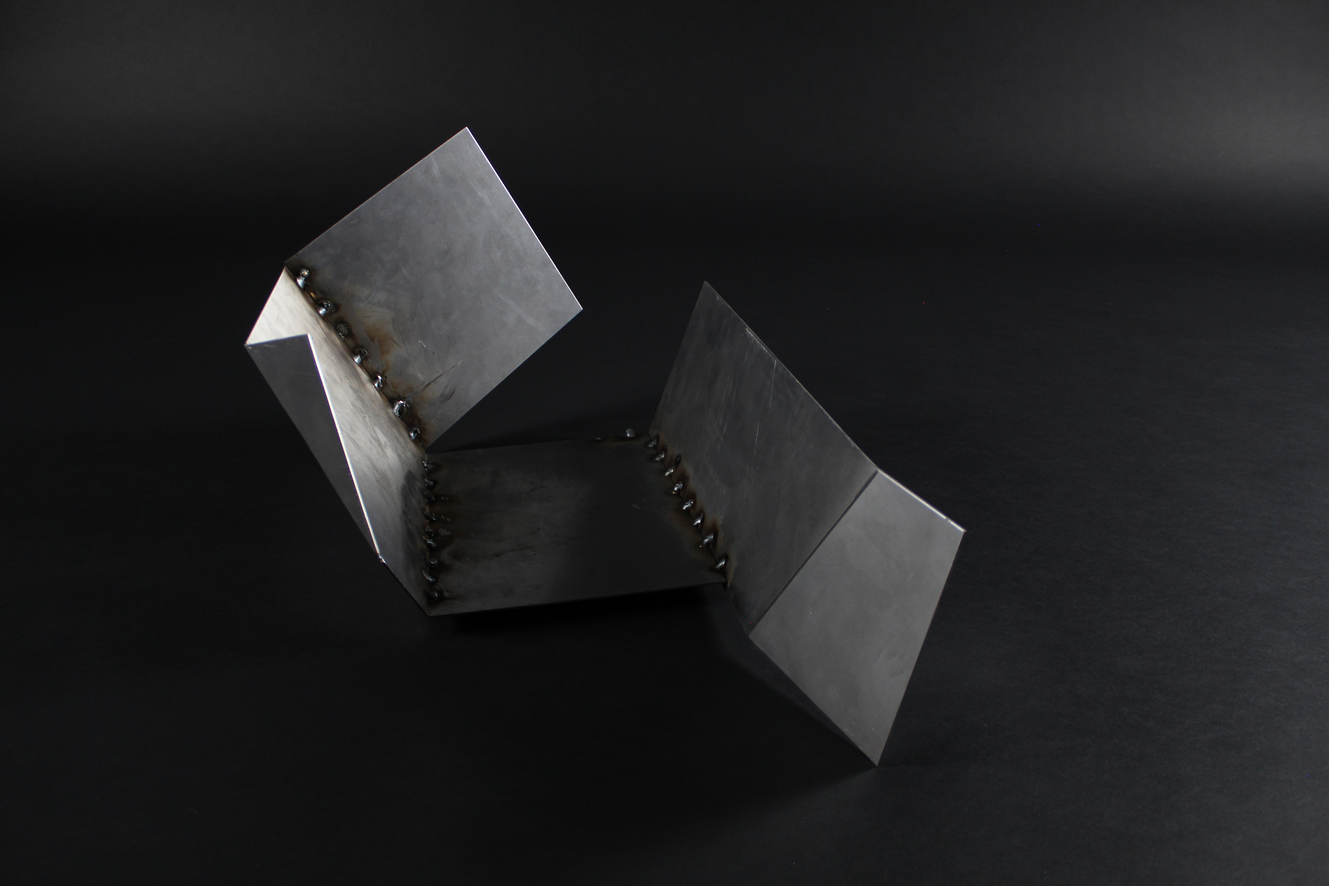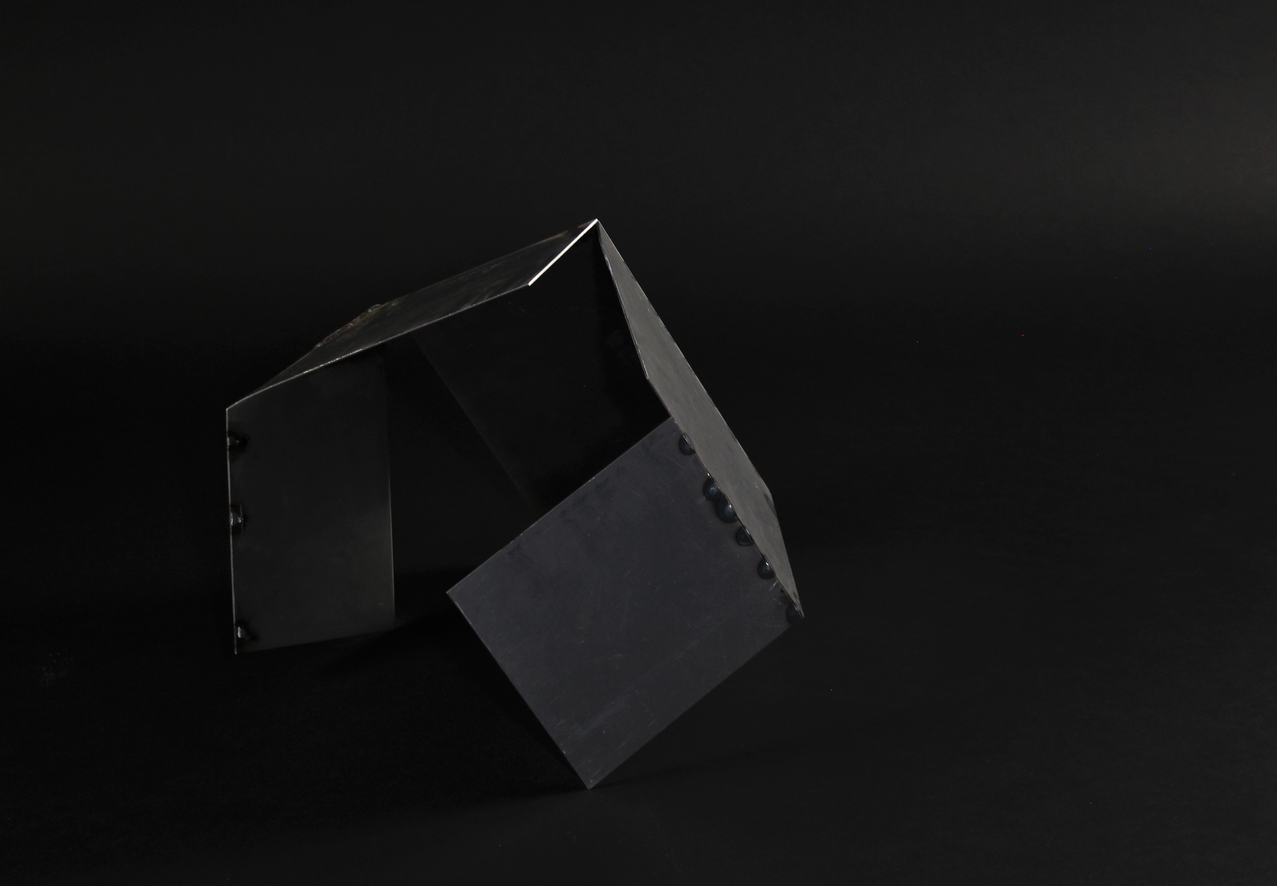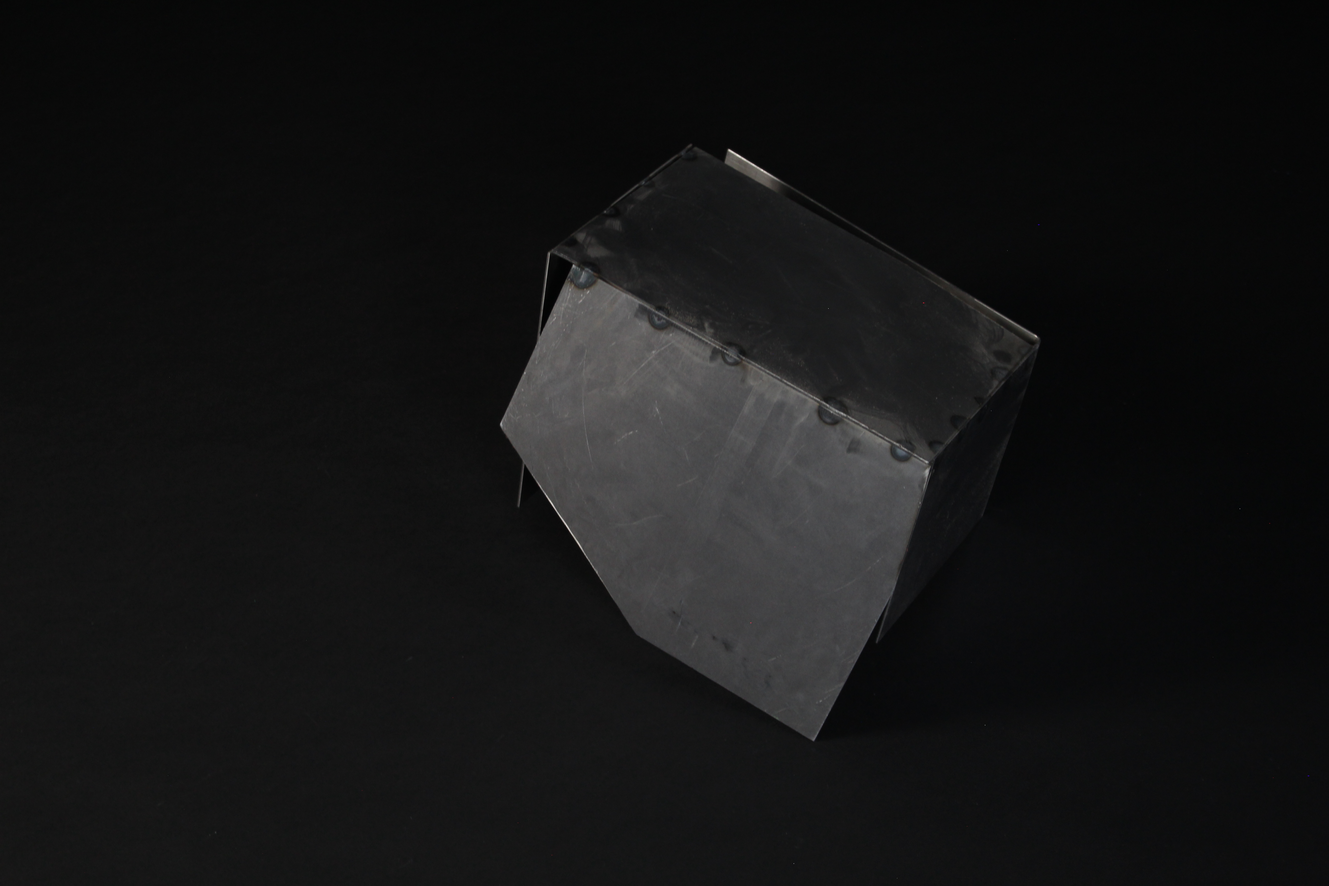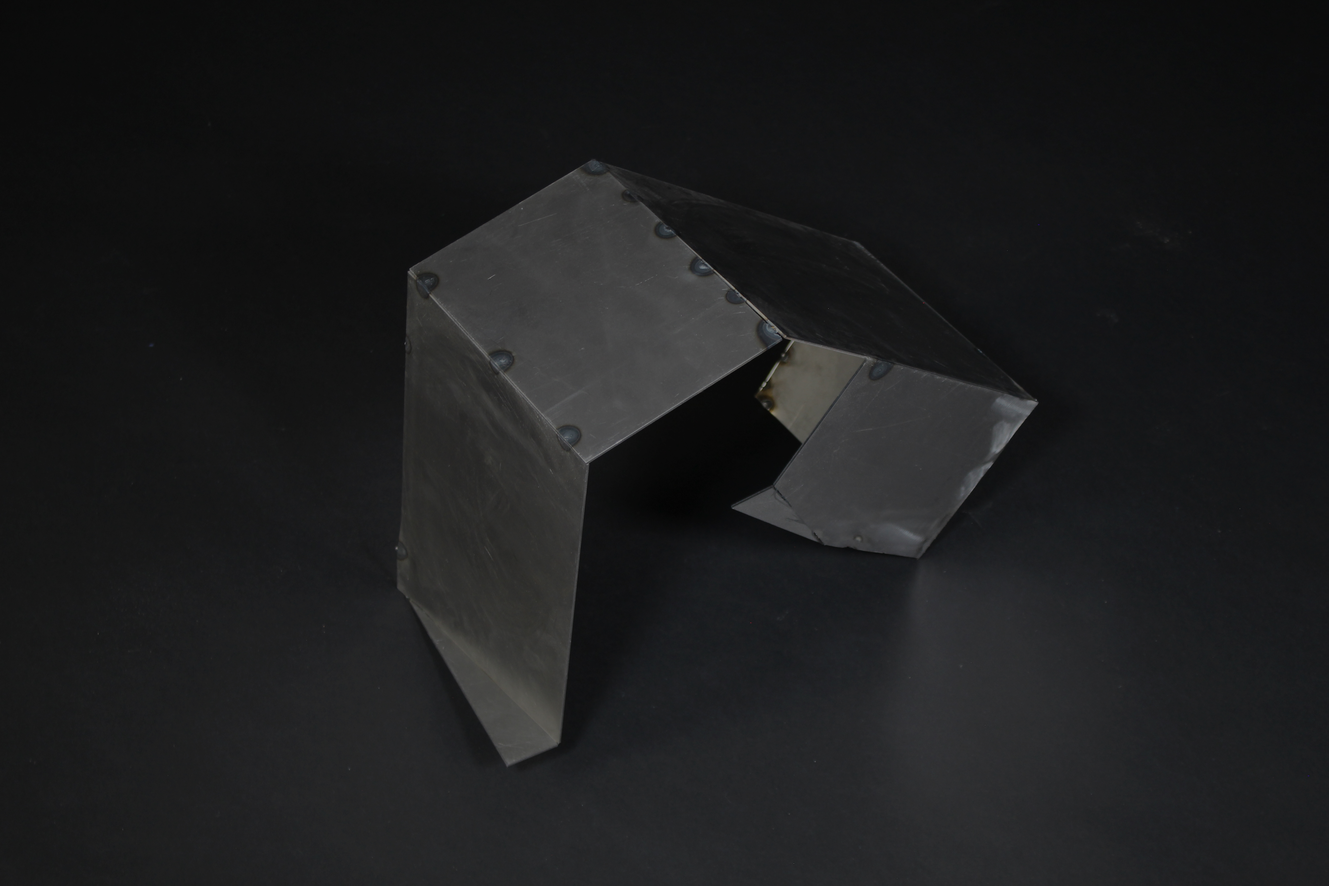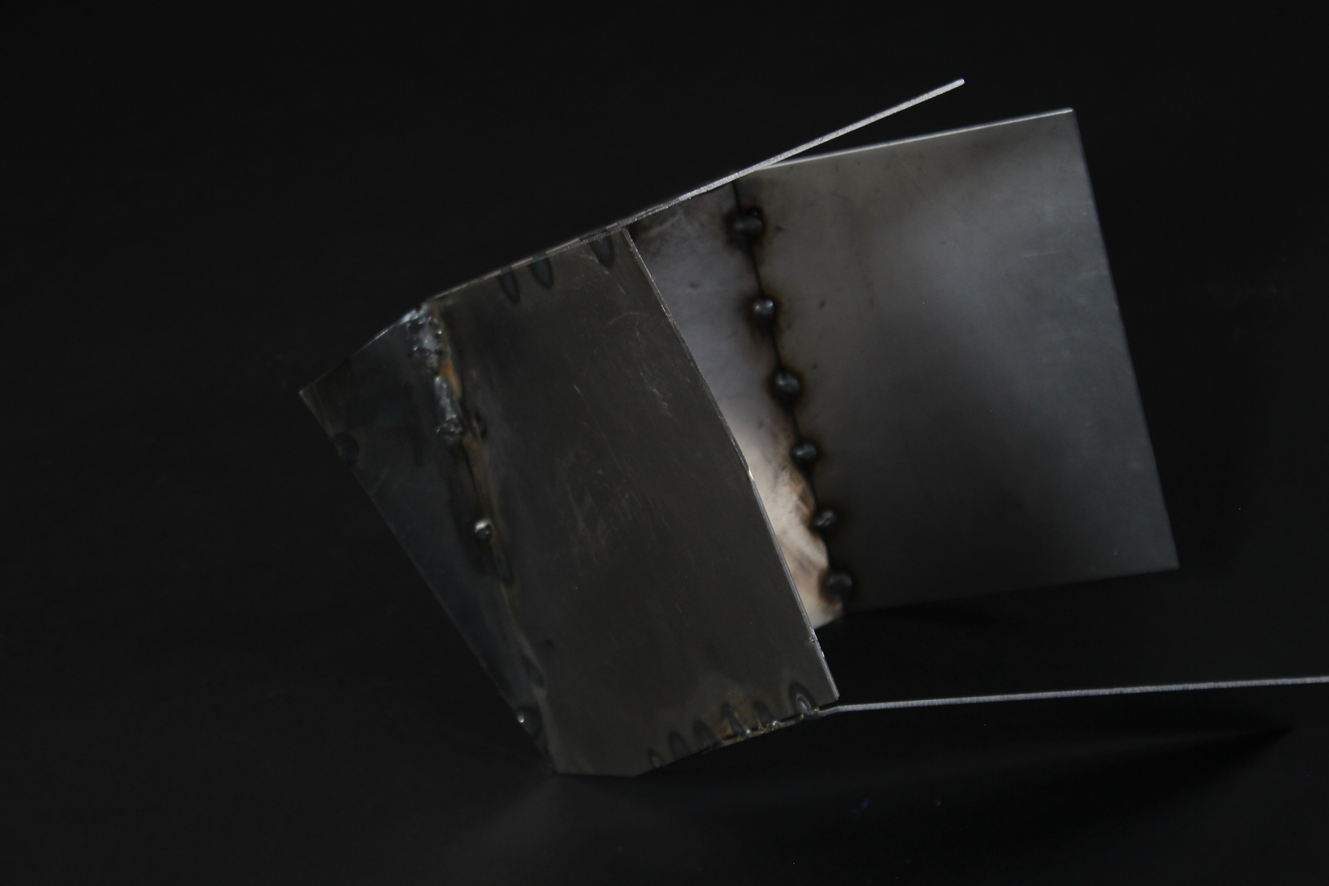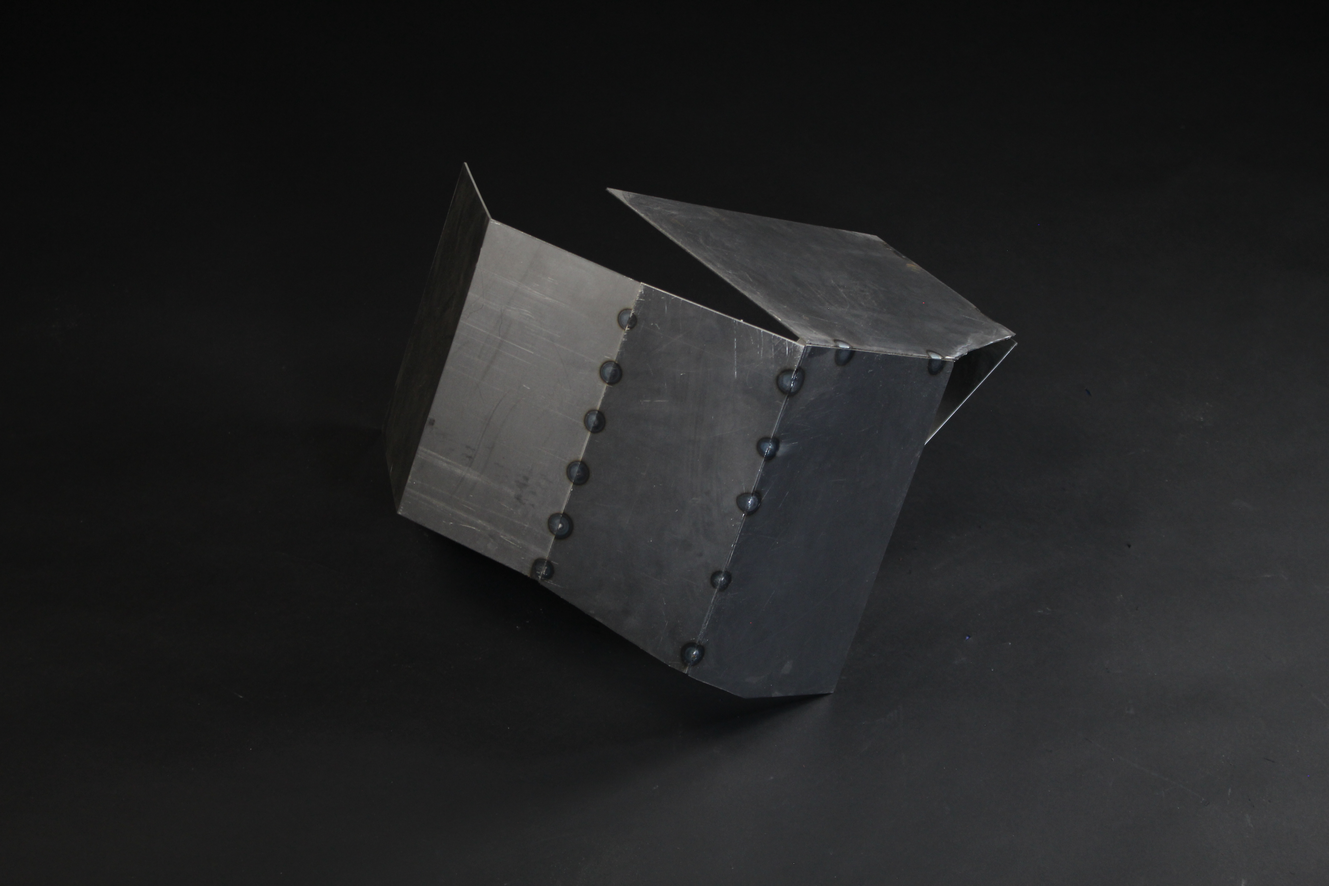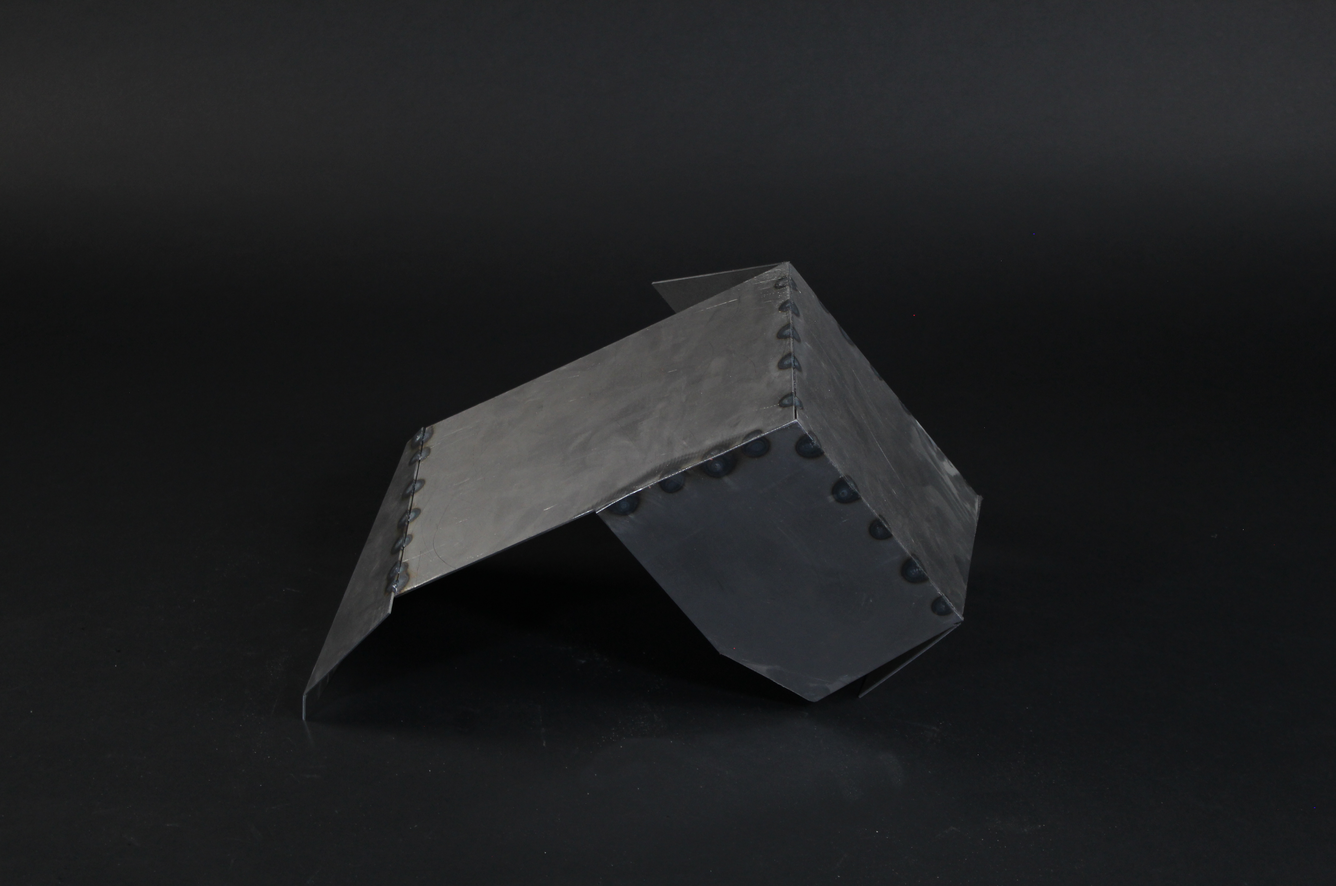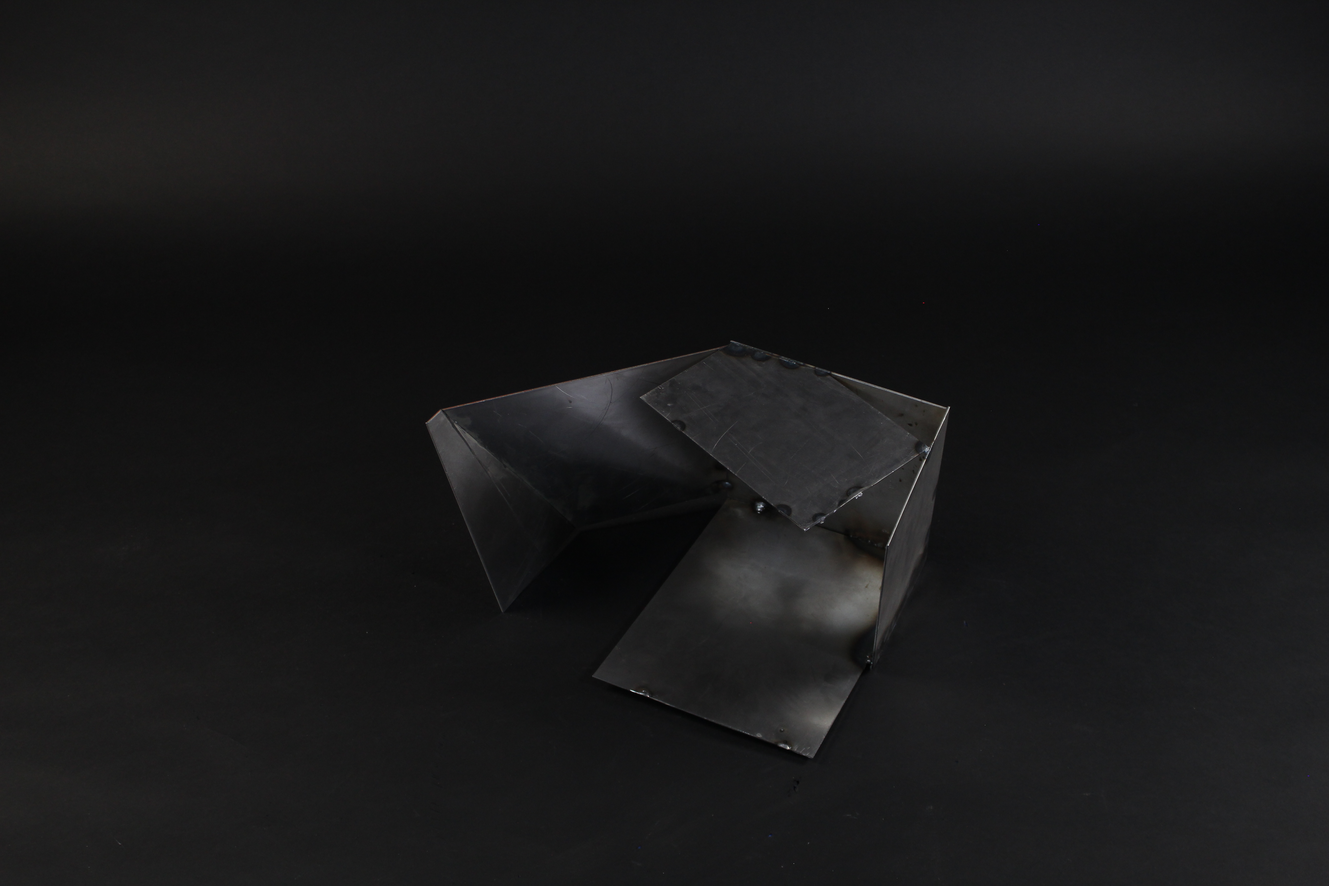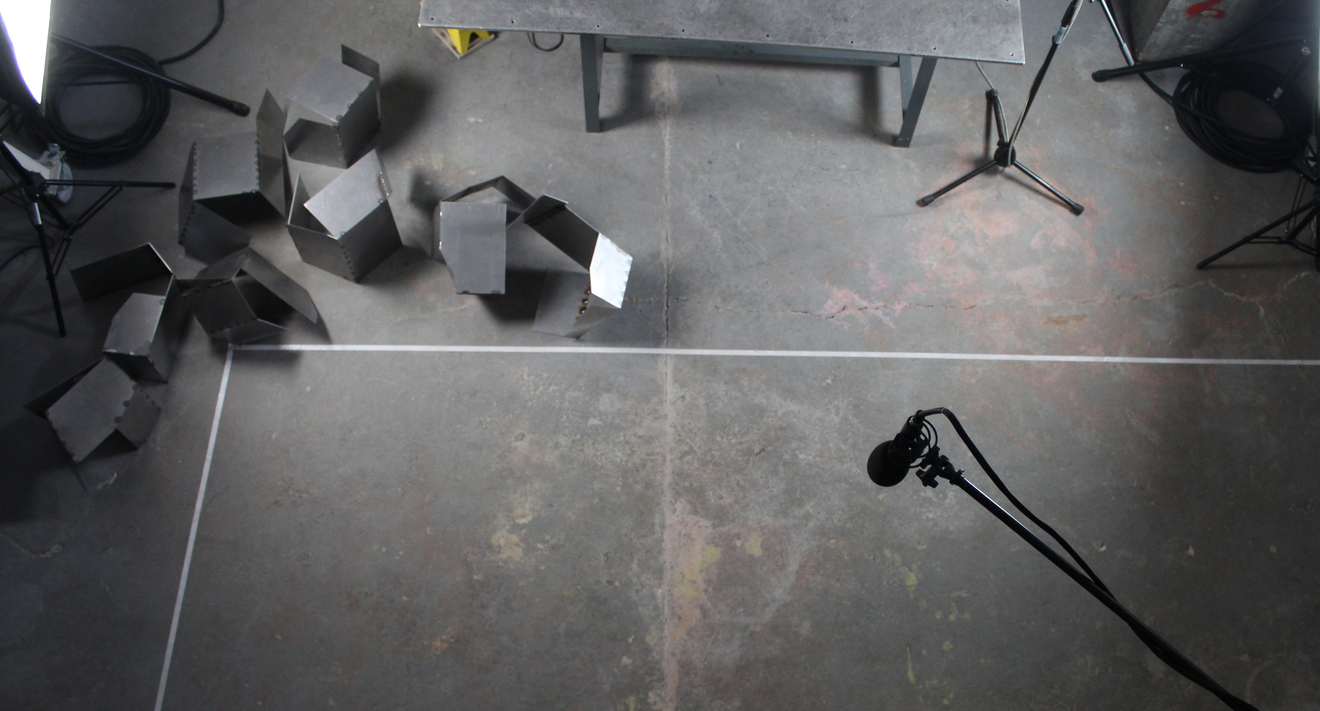3. Performance-installation: expanding temporal levels
I consider my work as a learning process both for myself as a co-composing artist and for my audience as experiencers. In engaging with the themes of multiplicity and presentness, my creative process makes it necessary for the mind to constantly re-adjust and re-focus.
Actions and liveness
An “aesthetic of labor and production” was mentioned by art historian Benjamin Heinz-Dieter Buchloh (2007, p. 56) to describe Richard Serra’s exploration of a “kind of sculpture [that] could still be credible under the conditions dictated by spectacle…insisting on a kind of bodily reinscription”. The same could be said about the performances of Greg Pope and Test Department, in which sound was produced and transformed through the manipulation of pieces of material and tools (de Bruyn, 2013; Test Dept, 2014). Greg Pope used in his work Cipher Screen (2010), a reductive process of scratching film strips for producing visuals and sound. His creative process could be characterised as a loop, in which material is manipulated through successive actions in a workshop-like installation-performance. Cipher Screen involves a creative process in which changes are happening simultaneously across physical/visual material and sound. The strips are looped over a plate and get further scratched, coloured and layered, what Dirk de Bruyn called “intervention process” and compared it to the “activity occurring in the computer’s covered-over circuitry” (2013). A machine-like operation fused to “an aesthetic of labor” (Buchloh, 2007, p. 56). The group Test Department worked toward an aesthetic of a “dynamic physical totality” (Test Dept, 2014). Their performances involved raw materials, abandoned industrial environments and tools that were turned into “designed, sculptural instruments” (ibid.). Such equipment was used for achieving a fusion of light, sound samples, live percussive sound and electronics. Turning industrial spaces into multisensory environments through a physically demanding experience for both performers and audience, Test Dept realized “a test of physical endurance that journeyed through the sonic pain threshold and into a cathartic energy release” (ibid.).
For Joshua Lubin-Levy and Alizia Shvarts (2016, p.115), “to live and to labor are the twinned imperatives to which we are always already given. Together, they animate a rhythm of material production and reproduction that extends over time”.
As a place of realization of the praxis and of actualization of the human subjectivity, living labor constitutes the eventual heart of the human activity. Without labor, the material and the instruments of production would remain without life. (Hamraoui, 2013, own translation)
Lubin-Levy and Shvarts stressed the temporal structure behind this interdependent relationship as such,
The means of subsistence, which can be immediately consumed by the individual, are transformed into new means for production, which are consumed through the labor process. This illuminates a circular temporality wherein the product is both the result and animating condition of the process. (2016, p.117)
The above remarks in relation to Greg Pope’s and Test Department’s performances function as metaphors for the relationship between action, object and sound in this article. To engage with action and its transformative role in terms of making, I employ a performative and interactive approach, in which actions are viewed in-between modalities, and their outcome as an initiation of what would follow and not necessarily, as an end product. Therefore, the aspect of “circular” shape of temporality breaks here due to the multiple temporal levels of a performance-installation form that intends to showcase the power of praxis in itself and not merely a product; to give space for thinking about the potentiality of the action in relation to the generation of something.
Thinking through materials
The theoretical exploration undertaken is reflected through the practical work and vice versa, questioning the outcomes at each stage as means for grasping artistic knowledge production in and through sound. According to Robert Nelson, in practice-based research “critical reflection on process is an integral part of the research inquiry, as it might well be in the making of artwork” (Nelson, 2013). Carole Gray and Julian Malins discussed the aspect of reflexivity informed by Schön’s concept of “reflection-in-action” as a way for reconsidering and “reshaping action while we are doing it” (Gray and Malins, 2004, p. 22). Candy and Edmonds characterized the “’process of practice’ as an integral part” of practice-based research methodology (Candy and Edmonds, 2018, p. 65). Reflection-in-action concerns a form of awareness and understanding of research by “telling ourselves a story about ourselves” (Steier, 1992, p. 3 as quoted in Gray and Malins, 2004, p. 22). Franck Camilleri makes a distinction between “artistic searching” and “research” in the context of performance:
Search and research in performance necessarily coexist and inform each other […] “search” indicates a specific artistic quality or aesthetic choice as an objective and is dependent on the artist’s quest for expression, renewal, or development […] “research” […] focuses on the identification and definition of principles in the creative process and is not bound to specific artistic results or choices. (Camilleri, 2013, p. 153)
The two concepts are integral to the practice of co-composition. Aesthetic decisions are introduced in a dialogue with theoretical reflections and an analysis of the creative process. Through an example of contrast between theory and craftsmanship, Tim Ingold refers to Peter Dormer and Glenn Adamson questioning the space between making and thinking:
We cannot make the future…without also thinking it. What then is the relation between thinking and making? To this, the theorist and the craftsman would give different answers. It is not that the former only thinks and the latter only makes, but that the one makes through thinking and the other thinks through making. The theorist does his thinking in his head, and only then applies the forms of thought to the substance of the material world. The way of the craftsman, by contrast, is to allow knowledge to grow from the crucible of our practical and observational engagements with the beings and things around us (Dormer, 1994; Adamson, 2007). This is to practise what I would like to call an art of inquiry. In the art ofinquiry, the conduct of thought goes along with, and continually answers to, the fluxes and flows of the materials with which we work. These materials think in us, as we think through them. (Ingold, 2013, p. 6)
My position stands in-between the two approaches outlined by Ingold; I am considering “the act of making as a form of critical reflection and theoretical inquiry” (Pérez, 2011, p. 379). My artistic practice involves thinking through materials, their properties and qualities, while responding to the employed processes, concepts and methods, as well as theorizing through them; as articulating “knowledge takes the form of statements about the known, personal knowledge both grows from and unfolds in the field of sentience comprised by the correspondence of practitioners’ awareness and the materials with which they work” (Ingold, 2013, p. 111).
Robert Morris spoke of “formsf behaviour aimed at testing the limits and possibilities involved in that particular interaction between one’s actions and the materials of the environment” (1993, p. 73). Morris’s ideas of process were closely related to Paul Klee’s view that the making of the artwork was more important that the outcome itself (Klee, 1973). For Klee, it was about being in motion, the act of bringing something to its existence; focusing then on the energy of the creative process through the actions and thoughts of the artist that generate the work. Informed by Klee’s view, Tim Ingold stressed that “the processes of genesis and growth that give rise to forms in the world we inhabit are more important than the forms themselves” (2009, p. 91). I focus on creating space for the exploration of differences within the relationships formed between action and response.
…the ‘as if’ actor [programmed with this knowledge, and provided with the requisite material equipment] and the skilled practitioner employ different kinds of intentionality. The first is the kind entailed in orthodox Cartesian accounts of volitional behaviour, in which to have an intention is to prefix that behaviour with a thought, plan or mental representation which it serves to deliver. The second is a kind of intentionality that is launched and carried forward in the action itself, and corresponds to the attentive quality of that action. It is the intentionality not of an isolated mind, of the cogitating subject confronting an exterior world of things, but rather that of a being wholly immersed in the relational nexus of its instrumental ‘coping’ in the world. (Ingold, 2000, p. 415)
This opens up questions of liveness and presentness. I consider the liveness of my sonic response to sculptural material and vice versa, as a kind of liveness that is concerned with “traces of human effort”, as Pete Furniss (2017, p. 55) mentioned in reference to Paul Sanden’s typology of liveness (2013). To be meaningful for co-composition is to differ; identical responses would have predefined outcomes and the coping and engagement with the process would cease. The real-time compositional decisions aim at expanding the control of both modalities together and the one through the other by introducing a multisensory experience of space-time. In that sense, co-composition could exist as a temporal form and an audience would need to be present in order to experience it.
As it takes place (and that takes time), it also takes on the semantic connotations of the place, as an event in and of the environment…Attending to the sound event, what takes place is a politics of presence, proximity and relationship. (Di Scipio, 2013-14, p. 12)
Beth Hoffman highlighted that a performance can only happen in the present as according to Peggy Phelan, it “cannot be saved, recorded, documented, or otherwise participate in the circulation of representations of representations: once it does so, it becomes something other than performance […] Performance’s being […] becomes itself through disappearance” (Phelan, 1993, p. 146; Hoffman, 2012). Hoffman continued by mentioning that “…time provides the logic through which the ever-receding ‘now’ of the ephemeral gesture can be figured relative to the ‘afterwardness’ of writing and documentation, performance’s ‘other’…” (Hoffman, 2012, p. 41). In live time and with time, I am interested in engaging with these different levels: how an action that has been realized (past) is related to something that is happening (now), which in turn triggers and affects what will occur (future).
In discussing liveness in relation to sound, Croft focused on the “energetic characteristics” of the live generated sound by the actions of a performer in respect to the outcome as a manipulated sound. He was concerned with the “poetic significance of liveness” based on such relationships:
…pieces which use live processing to generate a generalised texture or environment whose relation to the energetic characteristics of the performer’s sound and action is so remote that the effect is barely distinguishable from fixed tape, and could be more easily achieved thereby. I say ‘so remote’, but in fact (and this takes us to the heart of the problem), the relationship does not need to be very remote at all before this disjunction takes place and the poetic significance of ‘liveness’ is lost. In other words, the range of musical situations which actually call for live interaction on a more than pragmatic level – in which interaction is aesthetically relevant – is in fact rather narrow. (Croft, 2007, p. 60)
Richard Coyne argued that “[people] seek visual confirmation of sounds as if to settle the matter of their source” (2010, p. 11). Indeed, the idea of metalwork brings in the mind of the viewer specific experiences, sounds, smell and energy. In this work this conception of sculpting material becomes combined and reconstructed in the audience’s mind through the co-compositional situation. Croft noted that,
…while there is a body, there is only a generalized mapping of the physical movements of such a body (pressing keys, moving faders, and so on) to the types of energy and gesture present in the music – the music remains, in essence, acousmatic, in the sense that what is known to be the source is visible but remains perceptually detached (2007, p. 60).
It is then about the “energetic characteristics” between the sounds produced by the performer and the actions, and in that sense, co-composition encompasses a double effort of production of layering material over time. Different levels of causal relationships exist within the same work: sounds produced by the direct manipulation of physical material using an angle grinder and a welder, sounds produced percussively, from the way I am handling, rotating and placing the material, and processed sounds.
Performance 'Process/Procedure' by Eleni-Ira Panourgia, September 2018, University of Edinburgh. Photographed by Jack Walker.
Process/Procedure (2018)
The performance-installation Process/Procedure (2018) brings together these concerns seeking to trace “the process of generation in real time, presenting a concrete accumulation of significant moments” (Botha, 2017, p. 124). The use of these two terms together creates here a contrast between a fluid and at times improvisational development of the work (process) with a scripted structure of the spaces-in-between the different elements of the performance (procedure). Stretched over time, a “reality” of a workshop experience enabled the elimination of any actions that could seem remote and theatrical from the self-referent state of co-composition (ibid.). Movement in the space of the workshop is considered as an essential quality for sculpture making and not for the purpose of challenging the electronics or the visual outcome. To manifest co-composition solely by executing actions for sculpture making, I engage with ideas of emergence and disappearance through a controlled pace of my actions, of pausing and stopping the performance for longer periods of time. I look at how steel is being manipulated to become something with the minimum actions and for the minimum of shape. My aim is to show the potential the various states of its form as the performance progresses. The intention is to make multiple objects and to place them in the space of the workshop on the working bench and on the ground, for the audience to observe and experience their shapes, textures and traces during the installation time together with an environment of processed sounds. Therefore, my concern is to ‘inhabit’ the space of the workshop by making it viable in terms of performance and lived in terms of audience experience. This reflected what Botha referred to as “tracing the process of generation in real time, presenting a concrete accumulation of significant moments” (ibid.).
Process/Procedure was structured as an improvised durational event, lasting for three hours per day over a period of three days. To develop the experience in terms of movement, dynamic relationships involved pausing as part of the work, resting, as well as switching to a different space through installation time for the audience for presenting the multiple elements of co-composition together over a temporal form of 45 minutes of performing and 15 minutes of installation time that applied to each hour of the performance. This involved exhibiting the objects, the sounds, the actions and the space of the performance itself. My intention in this setup was to share the ‘block’ of space in which I was performing. This was achieved by employing a temporal organization of the audience: they would at first observe the performance from the balcony above the space for 45 minutes, then enter the space of the workshop for 15 minutes to experience the installation. The audience was encouraged to visit, leave and return to the space of the performance and not only observe the performance from the balcony area, as co-composition took the form of an open-ended and constantly evolving experience.
In terms of sound, a quad-like system was used for combining processing channels and for using panning to enhance the immersion of the audience. Two speakers were placed on the balcony area and two right below in the space of the performance, paired with the two speakers and a subwoofer in front of the working area. Two monitor speakers were placed behind me. In moving between performance and installation, I was switching between the two speakers on the balcony (performance) and the two speakers in the workshop space (installation). As I regard material manipulation inherent to the generation of unknown situations in terms of co-composition, I pursued the development of an interface that would be responsive to the actions themselves and their intensity rather than focusing on producing sounds that would trigger the device. The work was structured around three types of sounds: a) sounds produced manually and acoustically by handling steel sheets; b) sounds produced by electrically operating machines for manipulating steel (angle grinder/cutter and MIG welder); c) sounds that are electronically processed and emitted from loudspeakers. Live sound was passed from a a dynamic cardioid microphone into the sound interface connected to a computer running Ableton Live and Max For Live. Sound processing was articulated through a custom-built device developed in the Max environment that operates based on an amplitude threshold. Reaching the maximum value of this threshold would trigger an effect of delay that was preselected but could also be changed during the performance. In triggering the threshold, the device would start recording a predefined duration of the live sound into a buffer and release it processed, back to the performance environment.
Each hour of the performance started with the same number of steel sheets cut in rectangular shapes, which varied in size and were used to make one sculptural object. The improvisational manner of material transformation concerned all aspects of co-composition: sculpture, sound and actions. During the performance, I was moving between the working bench and the computer for adjusting processing parameters and the sensitivity of the interactive devices. Listening guided making as I was changing the sound processing according to what I was listening, handling and seeing. This introduced a two-way feedback during the performance. I kept focusing on my awareness of each of the elements of co-composition, together with my grasp of the space, the interactive process and my actions. Such physical aspect to liveness was essential for the performance; to be aware of the whole and of each individual element together was the condition of my performing.
Along the nine hours over three days of performing, co-compositional interactions kept changing based on my active response to the simultaneous transitions across materials. Sculptural objects were thought of in a fluid manner, on-going and changing directly informed by the processed sound environment. The delayed sounds kept reminding me of the previous state of the object, while I was looking at the current one. Their transformation directed my thinking toward the future potential of the object. Being immersed by all elements as an overall meditative state, contributed in performing in-between the modalities, manipulating then not only the physical and sonic material but also the spaces in-between. It was a constant effort of adjusting the qualities of both material types in order for the one to speak through the other. Appearance and disappearance highlighted the interdependence of these transformations. Co-composition was therefore triggered from the activity of seeking a form. It is through material “presence and its reproducibility” (Søchting, 2017) that one is able to navigate and to achieve transitions across sound and making.
Following the 45 minutes of performance during each hour of the work, I was leaving the workshop space, while the audience was invited to descend from the balcony area to the workshop space in order to experience the installation. This intended to give a different view of the work and allow the audience members to become more immersed by the objects, the sound environment and the space of the performance. It introduced a temporal organization of the audience experience. An invigilator was leading the audience inside the workshop in a designated area next to the working bench. The sculptural objects were placed on the ground and on the bench and the processed sound environment was coming out of a quad-like system. Sound was different during the installation in terms of time and quantity. It layered temporal levels of the interactive relationships and the synchronous material transformation by reproducing and rearranging the co-compositional interactions realized during the performance. Time during the installation was then different than during the performance – 45 minutes were presented as 15 – which provided with an accumulation of actions in the form of sound and a dense view of the process.
